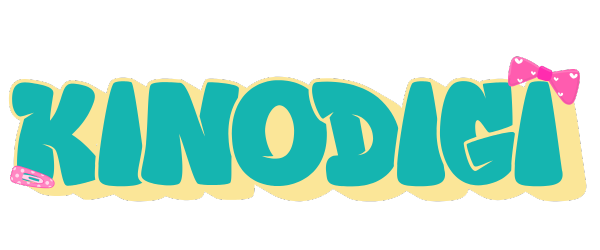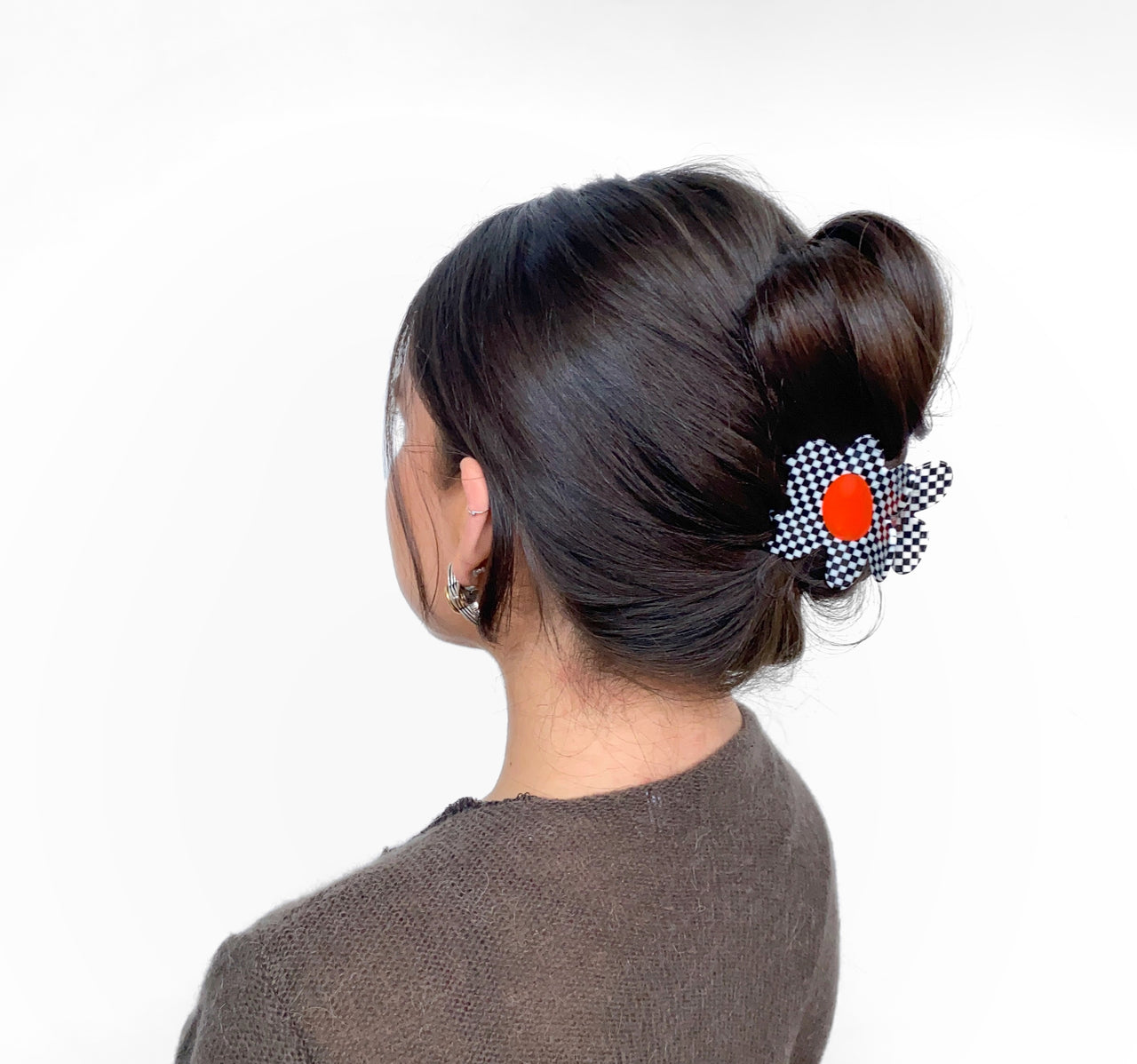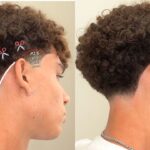Hair chunks, unsightly clumps of hair that can mar an otherwise healthy head of hair, are a common problem with a variety of causes. In this article, we’ll explore the causes, consequences, and treatment options for hair chunks, providing you with the information you need to prevent and address this hair concern.
Hair chunks can appear in various forms, from small, localized clumps to larger, more diffuse areas of hair loss. They can be caused by a variety of factors, including hair breakage, hair loss, and hair damage.
Definition of Hair Chunk
In hair styling, a “hair chunk” refers to a section of hair that is separated from the rest of the hair and styled or manipulated individually. Hair chunks can be used to create various hairstyles, such as braids, buns, ponytails, and updos.
In hair loss, a “hair chunk” may refer to a noticeable amount of hair that falls out at once. This can be a symptom of an underlying medical condition, such as alopecia or trichotillomania.
Examples of Hair Chunks in Hairstyles
Here are some examples of how hair chunks can be used in different hairstyles:
- Braids: Hair chunks can be braided together to create intricate and stylish braids.
- Buns: Hair chunks can be twisted or pinned into a bun to create a variety of updo styles.
- Ponytails: Hair chunks can be pulled back into a ponytail and styled with hair accessories.
- Updos: Hair chunks can be used to create elaborate updos, such as chignons and French twists.
Causes of Hair Chunks
Hair chunks are formed due to various factors that can damage or weaken the hair shaft, leading to breakage and clumping. These factors include:
Hair breakage occurs when the hair shaft is subjected to excessive force or stress, causing it to snap. This can be caused by brushing or combing the hair too vigorously, using harsh hair care products, or styling the hair with heat tools.
Hair loss, also known as alopecia, is a condition that can cause hair to fall out in clumps. This can be caused by a variety of factors, including genetics, hormonal changes, medical conditions, and certain medications.
Hair damage can also contribute to the formation of hair chunks. This can be caused by exposure to environmental factors such as sun damage, pollution, and chlorine in swimming pools. Chemical treatments, such as bleaching or dyeing the hair, can also damage the hair shaft and make it more prone to breakage.
Consequences of Hair Chunks
Hair chunks can have significant consequences for both the appearance and health of your hair. Large, noticeable chunks of hair can be unsightly and embarrassing, leading to a loss of confidence and self-esteem.
Impact on Hair Appearance
Hair chunks can disrupt the overall texture and smoothness of your hair, making it look unkempt and unhealthy. The uneven distribution of hair can create an unbalanced and patchy appearance, drawing attention to the affected areas. This can be particularly distressing for people who value their hair as a part of their personal style and identity.
Impact on Hair Health
In addition to their aesthetic impact, hair chunks can also affect the overall health of your hair. The breakage and shedding associated with hair chunks can weaken the hair shafts, making them more prone to further damage and breakage. This can lead to a vicious cycle of hair loss and damage, resulting in thinning hair and scalp problems.
Prevention and Treatment of Hair Chunks
Preventing hair chunk formation involves adopting proper hair care practices, such as avoiding excessive heat styling, using gentle hair products, and maintaining a balanced diet rich in vitamins and minerals.
Treatment Options for Hair Chunks
Various treatment options exist for hair chunks, including:
– Hair Repair Products: Specialized shampoos, conditioners, and leave-in treatments can help strengthen and repair damaged hair, reducing the likelihood of breakage and chunk formation.
– Hair Extensions: Hair extensions can be used to conceal hair chunks and create a fuller appearance. They come in various lengths, colors, and textures to match natural hair.
– Surgical Procedures: In severe cases, surgical procedures like hair transplantation may be considered to replace damaged or lost hair and restore hair density.
Case Studies and Examples
Numerous individuals have experienced hair chunks, each with unique causes, treatments, and outcomes. These case studies provide valuable insights into the complexities of this condition.
One notable case is that of Jane, a 25-year-old woman who experienced sudden hair loss in large chunks. After extensive testing, she was diagnosed with alopecia areata, an autoimmune disorder that attacks hair follicles. Treatment with topical corticosteroids and immunotherapy proved successful in promoting hair regrowth.
Alopecia Areata, Hair chunk
- Autoimmune disorder targeting hair follicles
- Causes sudden hair loss in round or oval patches
- Treatment includes topical corticosteroids, immunotherapy, and hair transplantation
Another case study involves David, a 40-year-old man who experienced hair loss in chunks after undergoing chemotherapy for cancer treatment. The chemotherapy drugs damaged hair follicles, leading to hair thinning and breakage. Once David completed chemotherapy, his hair gradually regrew with the help of hair growth supplements and minoxidil.
A hair chunk is a versatile and stylish way to add volume and texture to your hair. It can be used to create a variety of looks, from messy buns to elegant updos. Hair chunks are also a great way to experiment with different colors and textures without having to commit to a permanent change.
If you’re looking for a way to add some flair to your hair, aesthetic hair accessories like hair chunks are a great option. They’re easy to use and can be styled in a variety of ways, making them a versatile addition to any hair care routine.
Chemotherapy-Induced Hair Loss
- Chemotherapy drugs target rapidly dividing cells, including hair follicles
- Hair loss typically occurs within 2-3 weeks of treatment
- Hair regrowth usually begins 3-6 months after chemotherapy completion
These case studies highlight the diverse causes and treatments for hair chunks. Early diagnosis and appropriate management can help minimize hair loss and promote hair regrowth.
Visual Representations
Hair chunks can vary in appearance and characteristics depending on their underlying causes. To illustrate these differences, we present an HTML table that categorizes and describes the distinct types of hair chunks.
Types of Hair Chunks
| Type | Description |
|---|---|
| Alopecia Areata | Characterized by round or oval patches of hair loss, ranging from small coin-sized areas to more extensive bald spots. The hair shafts within the affected areas may appear broken or tapered, giving the patch a “moth-eaten” appearance. |
| Telogen Effluvium | Caused by a temporary disruption in the hair growth cycle, leading to excessive hair shedding. The hair chunks tend to be smaller and less defined, with a gradual thinning of hair over the entire scalp. |
| Anagen Effluvium | A sudden and severe hair loss condition that occurs during the active growth phase of the hair cycle. The hair shafts break off close to the scalp, resulting in short, stubby hair chunks. |
| Trichotillomania | A psychological condition characterized by recurrent hair pulling. The hair chunks are typically small and irregular, with jagged edges and broken hair shafts. |
| Traction Alopecia | Caused by prolonged tension or pulling on the hair, often due to tight hairstyles or hair extensions. The hair chunks are usually larger and more defined, with a “U” or “V” shape where the hair has been pulled out. |
Discussion and Conclusion
Addressing hair chunk concerns is essential for maintaining healthy hair and overall well-being. Understanding the causes and consequences of hair chunks empowers individuals to take proactive steps towards prevention and treatment.
Seeking professional advice from a dermatologist or hair specialist is crucial when experiencing persistent or severe hair loss. These experts can accurately diagnose the underlying cause, recommend appropriate treatments, and provide guidance on lifestyle modifications that support hair health.
Epilogue
Hair chunks can have a significant impact on hair appearance and overall hair health. They can also affect self-esteem and confidence. If you’re experiencing hair chunks, it’s important to seek professional advice to determine the cause and discuss treatment options.















